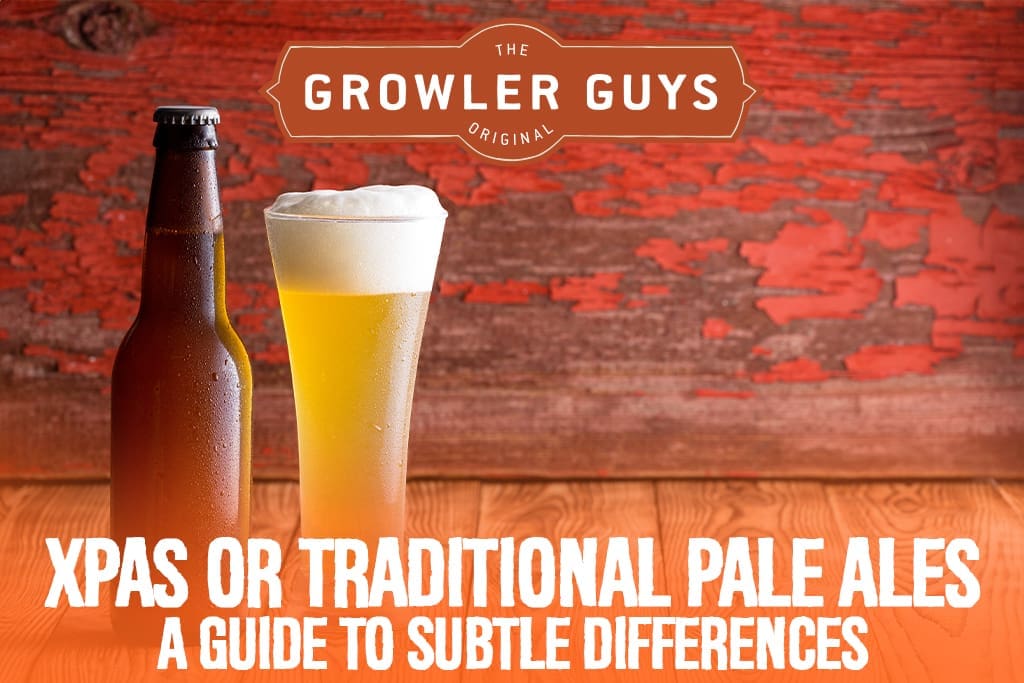 Navigating the craft beer world can feel like a delicious adventure. Beer styles are ever-expanding, and a current standout is the Extra Pale Ale (XPA). This relatively new addition has many wondering what exactly is an XPA, and how does it compare to the traditional pale ales we all know and love? Let’s get into the details.
Navigating the craft beer world can feel like a delicious adventure. Beer styles are ever-expanding, and a current standout is the Extra Pale Ale (XPA). This relatively new addition has many wondering what exactly is an XPA, and how does it compare to the traditional pale ales we all know and love? Let’s get into the details.
What is a Traditional Pale Ale?
Before we get into XPAs, let’s fully understand traditional pale ales. Pale ales have long been a staple in the craft beer world. Originating in England, traditional pale ales are known for their balance between malt and hops. They’re typically amber or light copper in color, with an ABV ranging from 4.5% to 6.5%. Traditional pale ales are often earthy and floral with slight citrusy hop notes and toasty malt sweetness. In the U.S., American Pale Ales (APAs) have put a more hop-forward spin on this classic style, typically emphasizing bold citrus and pine flavors from American hop varieties like Cascade and Centennial.
What Makes an XPA Different?
Now, enter the XPA or Extra Pale Ale. While the name may suggest an intense version of a traditional pale ale, XPAs are typically lighter in body and color. The term “extra” can be interpreted in a few different ways depending on the brewery, but it often refers to the beer being “extra” refreshing, “extra” hop-forward, or “extra” sessionable.
Flavor Profile: XPA vs. Traditional Pale Ale
The main difference between XPAs and traditional pale ales is in the flavor profile. XPAs typically dial back the malt sweetness to let the hops shine even more brightly. The result is a crisper, cleaner taste with more pronounced fruit-forward hop flavors. Expect to encounter juicy citrus or tropical fruit more prominently in an XPA. Traditional pale ales, on the other hand, are a bit more malt-forward, providing a toasty caramel sweetness to balance the bitterness of the hops. You might taste earthy, piney, or floral hops, but in balance with a medium body and malt character.
Appearance: A Lighter Brew
XPAs tend to be paler and lighter in appearance compared to their traditional counterparts. Many XPAs pour a light gold or pale straw color, while pale ales range from golden to deep amber. This lighter appearance of an XPA hints at its more delicate malt presence.
Body: Light and Crisp vs. Rich and Balanced
Another key difference lies in the body of the beer. XPAs are often brewed to be lighter and more sessionable, making them ideal for casual sipping on a warm day. The reduced malt body in an XPA creates a crisp, dry finish that is remarkably refreshing. On the other hand, traditional pale ales typically have a fuller body and a slightly richer mouthfeel. The malt character adds depth, creating a balanced drinking experience that can be satisfying in cooler weather or alongside a hearty meal.
ABV: Sessionability vs. Strength
XPAs are generally brewed with a lower alcohol content, often ranging between 4% to 5.5% ABV, making them highly sessionable. This lighter alcohol content allows drinkers to enjoy a few without feeling overwhelmed by the alcohol. Traditional pale ales, especially American Pale Ales, tend to fall into a slightly higher ABV range, typically between 5% and 6.5%. This difference in alcohol content reflects the more robust, full-bodied nature of the traditional pale ale.
When to Drink: XPA vs. Traditional Pale Ale
XPAs are perfect for casual outdoor activities or hot weather, where their light body and refreshing hop profile shine. Think picnics, beach trips, or backyard barbecues. They’re a go-to choice for anyone who enjoys a hoppy beer without being weighed down. Fuller bodied, traditional pale ales are ideal for enjoying year-round, especially when you’re craving a classic craft brew experience. Their balanced malt and hop profile make them a versatile beer that pairs well with a wide range of foods, from burgers to roasted chicken.
Find the XPA or Traditional Pale Ale for You at The Growler Guys
At the end of the day, both XPAs and traditional pale ales have a place in the craft beer world. Whether you’re a fan of the traditional pale ale’s malt-hop balance or prefer the crisper, hop-forward nature of an XPA, there’s no shortage of options to explore. Ultimately, it comes down to personal preference, so why not stop by your local Growler Guys and grab one of each to compare for yourself? With our extensive tap list, you will surely find the pale ale for you.

Reader Interactions